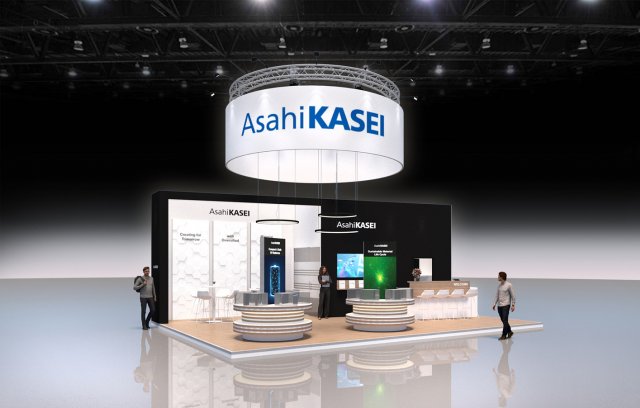
Victrex presents composite solutions for aerospace
Diversified material solutions for EV batteries and a more circular economy to be displayed.

6th September 2023
Innovation in Textiles
|
Japan
Japan’s Asahi Kasei is currently developing a chemical recycling system for automotive airbags based on nylon 6.6.
Together with Japanese partner Microwave Chemical, the company is working on a process exploting microwaves to depolymerize the used airbags and other nylon 6.6 parts to directly obtain the monomers hexamethylenediamine (HMD) and adipic acid (ADA). The process is expected to achieve high yields with low energy consumption and the reclaimed monomers will be used to manufacture new nylon 6.6.
At Fakuma, the leading trade event for industrial plastics processing which takes place from October 17-21 2023 in Friedrichshafen, Germany, Asahi will showcase diversified material solutions for safe and compact EV batteries, improved connectivity and lightweighting.
The company is currently developing a new continuous glass fibre reinforced thermoplastic composite called Lencen, formed by stacking layers of continuous glass fibre textiles and nylon 6.6 films. Due to its tensile strength, high heat resistanc and impact properties similar to metal, Lencen is said to improve the collision safety and weight reduction of EV batteries.
In addition, the company will showcase a carbon fibre reinforced thermoplastic unidirectional (CFRTP-UD) tape that employs both recycled continuous carbon fibre and the company’s Leona polyamide resin. Again with a higher strength than metal, the CFRTP-UD tape can be applied to vehicle frames and bodies, further enabling the recycling of end-of-life parts into new parts.
Also showcased will be cooling pipes for EV battery packs made of Xyron, a modified polyphenylene ether (m-PPE) and 2170 cell trays based on SunForce m-PPE particle foam.
AZP is a transparent polymer designed to overcome the disadvantages of conventional optical plastic materials. Featuring a close-to-zero birefringence equivalent to glass as well as a superior designability, this material allows high transmittance and low colour distortions at all viewing angles. Clear images without luminance variations, colour distortion and blurring can be achieved in polarized optical equipment such as AR/VR headsets and head-up-displays (HUDs). The premium quality appearance is also maintained when looking at the display through polarized sunglasses.
A bio-based and biodegradable cellulose nanofibre (CNF) made from cotton linter features a high heat resistance and network-forming ability. CNF-reinforced polyamide shows a thixotropic behaviour, making it highly suitable for 3D printing applications in terms of easy printing, dimensional accuracy, smooth appearance and mechanical performance. Furthermore, CNF has superior material recyclability compared to glass fibres.

Business intelligence for the fibre, textiles and apparel industries: technologies, innovations, markets, investments, trade policy, sourcing, strategy...
Find out more